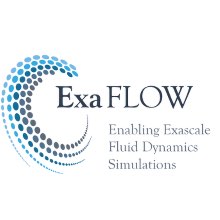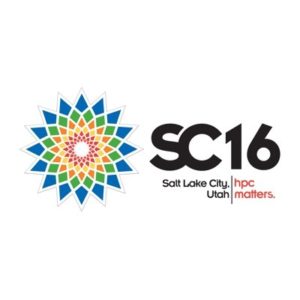 The ExaFLOW project has announced 3.3 Million Euros of funding for a group of eight organizations to take Europe’s CFD community one step closer to performing simulations in exascale environments.
The ExaFLOW project has announced 3.3 Million Euros of funding for a group of eight organizations to take Europe’s CFD community one step closer to performing simulations in exascale environments.
ExaFLOW stands for “Enabling Exascale Fluid Dynamics Simulations.” Computational Fluid Dynamics (CFD) is a prime contender for reaching exascale performance: In fluid dynamics there is virtually no limit to the size of the systems to be stu-died via numerical simulations, which can be exploited for extreme parallel scaling. Moreover, fluid flows are an essential element of many industrial and academic problems: A crude estimate shows that 10% of the energy use in the world is spent overcoming turbulent friction. As such, collaboration between software creators and European industries within automotive, manufacturing, aerospace, energy and health care is crucial.
The goals of ExaFLOW comprise four key innovation areas, including aspects of mesh adaptivity, resilience, strong scaling at exascale through novel CG-HDG discretisations and I/O efficiency improvements. In all these areas, significant progress has been made since the project start. For instance, we have developed fault tolerance mechanisms, such that the new algorithm “survives” >90% of the errors that would otherwise have resulted in an execution failure; this all with very little overhead both in fault-free execution and in recovery. We are currently putting that capability into Nektar++, which will also include a multi-layer checkpoint approach, supplementing classic to-disk checkpoints with inexpensive “diskless checksum checkpoints” that may be sampled more frequently. Similar developments are also added to Nek5000 using an innovative checkpoint/revolve algorithm. For the improvement of IO strategies we implemented a new tool called FieldIOBenchmarker which is integrated in our applications, and allows to use XML, HDF5 and SIONlib. Finally, we have considered a number of different pre-conditioners (including Hypre based on PETSc), which are ready to be used in the forthcoming h- and p-type refinements in Nek5000 and Nektar++.
Amongst the project partners there are leading European research groups from the Royal Institute of Technology (KTH) in Sweden, Imperial College London, the University of Southampton, the University of Stuttgart and from Ecole Polytechnique Federale de Lausanne (EPFL) together with three major European HPC centers:
- PDC at KTH in Sweden, who coordinates the project
- High Performance Computing Center of Stuttgart (HLRS)
- Edinburgh Parallel Computing Centre of the University of Edinburgh (EPCC)
The two industrial use cases include McLaren Racing and the Automotive Simulation Center of Stuttgart who represents Opel in this project. All ExaFLOW innovations are clearly targeted to enhance the efficiency and exploitability of a number of existing and heavily used open-source codes on today’s largest-scale (and in the future exascale) systems: The spectral codes Nek5000 and Nektar++, and the finite difference codes OpenSBLI and NS3D.
 You can learn more about ExaFLOW at SC16 in Salt Lake City at booth #1743 HLRS and booth #701 EPCC.
You can learn more about ExaFLOW at SC16 in Salt Lake City at booth #1743 HLRS and booth #701 EPCC.
See our complete coverage of SC16, which takes place Nov. 13-18 in Salt Lake City.



